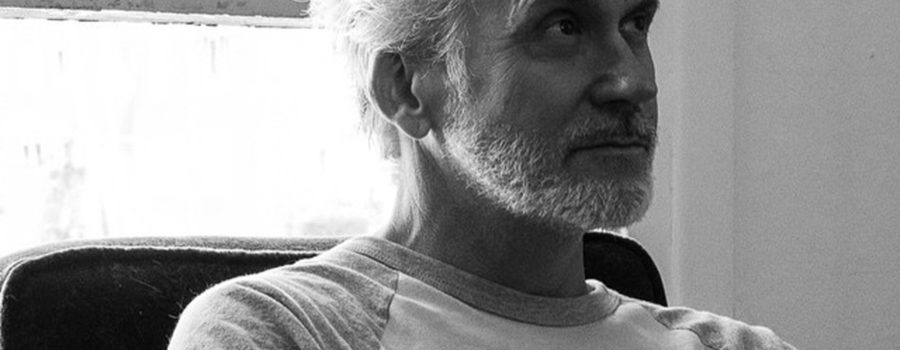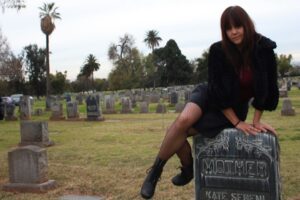Photo Credit: Brian Lynch
While the beauty of public libraries has been lost on some due to being able to hold the world in the palm of one’s hands, we must never forget its true power. Without libraries, who knows where artist Van Arno would be today. He spent many afternoons as a kid wandering through the aisles of his local library looking at any and all books that dealt with a particular part of history, “Mythology books were full of Renaissance art,” he remembers, “I liked knights and monsters and mythology and pirates.”
Those topics and the pirate illustrations of Howard Pyle led Van Arno to draw things that interested him, and as he got older he came into his own. Now he depicts everything from pop culture to history to even some biblical scenes in his work. We talked about it all and then some, starting with his nights working as a bouncer.
Kendra: Were any of your earlier pieces while you were attending Otis Parsons School of Design inspired by a crazy night at work?
Van Arno: I certainly did more than my share of LA hair metal band logos. It’s flattering to do logo designs and a week later five guys have it tattooed onto themselves. Many of these bands are still going strong
Kendra: Speaking of inspiration, you drew from some of the first cartoons when it came to your Olive Oyl pieces. If you were to do another series similar to that, what modern animated character do you feel would fit your style and aesthetic like Olive did?
Van Arno: Wow, I wonder. Cruella de Vil might have a wild youth worth documenting. But Olive Oyl fascinated me as a kid because she didn’t seem all that desirable, yet somehow men beat each other to death over her. Each suitor’s mainly motivated by preventing the other suitor from succeeding to attain her. Through it all, she suffers horribly, but she never doubts her own worth and beauty, although she’s mostly an irrational whiner and scolds. She’s almost a classic Tennessee Williams character.

“Clean Shaven Gams”
Kendra: Your work, overall, is very women-centric. Why do you feel women are more art worthy over men in not just your work but the works of others throughout history?
Van Arno: Men and women both enjoy looking at women. But in history, I think men outnumber women as the subjects of artworks (and books, movies, comics) Men get depicted as doers and builders and war winners. Women are traditionally seen as responders to the acts of men. Even Boudicca, a powerful military leader’s seen as a responder to Roman general Suetonius brutal acts in Britain.
Maybe our viewpoint will change. But I find this responder role in female archetypes more interesting than the lone male hero. Women are viewed as creative and creators. Men do, and wreck, things. Women enhance, and repair, and add more people to things. Also, a single mother raised me, and most of my closest friends are women.
Kendra: Another amazing piece you’ve done is the Angela Davis one. You deal a lot with African American figures and history. Is that something you grew up interested in?
Van Arno: “Angela Davis Roundhouse” was a piece in my show at Jonathan LeVine in 2011 called “The Minstrel Cycle.“ I’m glad I did it then because I think three or four years later I would have been too respectful (timid) to have been a white artist dealing with issues of race. The show included a Josephine Baker piece about her WW2 allied intelligence efforts. Also my favorite painting, “True Love Rescued After Long Debate” which was a Hey! magazine cover in Paris, but no one knew what to make of it in the US.

“Angela Davis Roundhouse”
Kendra: What about your Christian Science educational background has been the most influential when it comes to portraying more religious-based works like Hagar & Ishmael Flee the Bible?
Van Arno: I have done a lot of work dealing with religious figures from the Bible and Catholic saints. I have no strong religious feelings and I have no anti-religious agenda to press. I’m working in the tradition of western art, and historically that leans heavily on Greek mythology and Roman Catholicism for imagery. I find inspiration less in the stories and more in what Rubens did with them. Or Michelangelo, Caravaggio, or Cecil B. De Mille
Kendra: You just don’t pull from pop culture and history, but also your own life in regards to The Lancet. You mentioned that doctors tried to treat your aunt’s “justifiable unhappiness as an illness.” Can you explain what the bear in that piece represents?
Van Arno: I did several pieces in this style. My goal was to do figurative painting in a non-narrative form. I took a central concept, and “cast” characters to portray different facets of my feelings on the subject. This was great for me because I often feel many different ways about any issue!
This piece depicts a Neanderthal man discovering a mushroom, the medical/ psychological power of nature. An anime nurse depicts the bright future of chemicals. An injured bear who will tear all his medical intervention off and do himself further harm. And my naked crazy aunt with a scalpel in her head.
Kendra: Do you have any upcoming shows or galleries people can keep an eye out for, or are you working on new pieces this year?
Van Arno: In LA, where I live, I work with Thinkspace Gallery and Corey Helford Gallery. I’m between shows and just like showing individual pieces in group situations right now. I enjoyed showing with Factory Art Galerie in Paris last year and I hope to do more with them.






